#Habsburgs Coupled Daughters
Explore tagged Tumblr posts
Text
“She is unfit for her position both as Empress and as wife”: Elisabeth and Dr. Seeburger

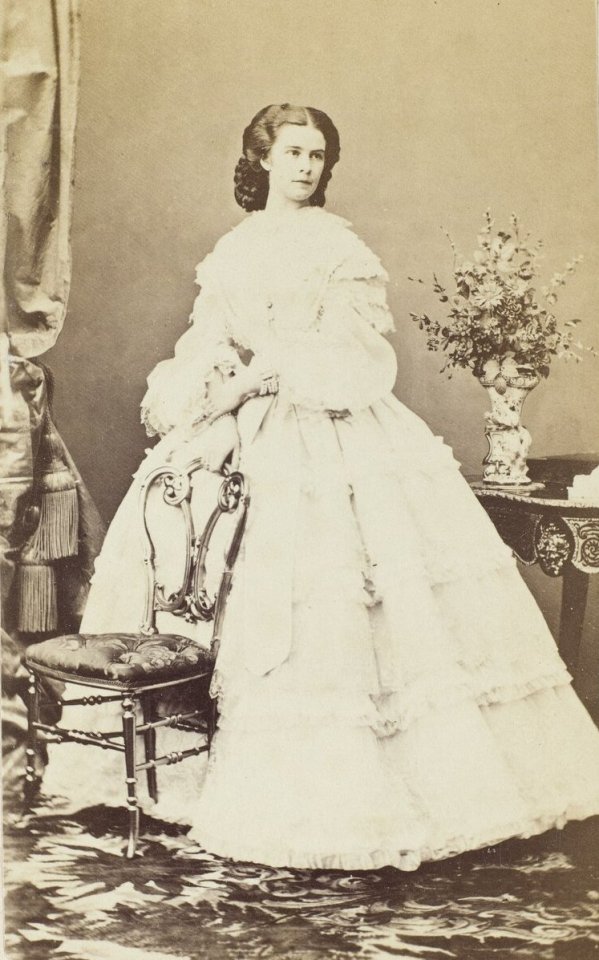
Left: Doctor Johann Seeburger, by Ludwig Angerer, c. 1860. Via the Royal Collection Trust. Right: Empress Elisabeth of Austria, by Ludwig Angerer, c. 1861. Via Wikimedia Commons.
I had this sitting on my drafts for months, yet I didn’t find any motivation to finish this post. That is, until the first teaser of Die Kaiserin season 2 dropped, featuring, among other things, a scene in which Elisabeth spits a doctor in the face. And while something as rude as this never happened, the young empress of Austria did have a troubled relationship with one doctor at the Habsburg court: Johann Seeburger. I don’t know if the doctor in the teaser is meant to be him, but given that he and Elisabeth ended up being borderline hostile towards each other, I wouldn’t be surprised if Seeburger was the inspiration (assuming the doctor is an actual character with lines and not a random physician that will get spit on the face for no reason). So without further ado, let’s look at what we know about Elisabeth and Seeburger’s relationship.
I couldn’t find information on Dr Johann Seeburger, only that he was born in 1800, and seems to have worked at court since at least the beginning of the reign of Franz Josef (probably earlier, since it was very difficult to access court). We don’t know what kind of relationship Elisabeth and Seeburger had when they met, as biographers don’t make any mention of it. He attended Elisabeth during her first pregnancy, and I think it’s safe to assume he also treated her during her second one. Seeburger wasn’t the only doctor consulted - Doctor Heinrich Fischer, the Wittelsbach’s personal physician, was also called for a second opinion.
Aunt Luise [Elisabeth’s mother]’s Doctor Fischer, in whom I have a great deal of confidence, has arrived here... [He was] delighted by Sisi’s blooming appearance and finds her whole condition very satisfactory. He and Seeburger say that the great moment will come at the end of February, at least the first days of March... (Praschl-Bichler, 2008)
Elisabeth probably felt more comfortable with Fischer, who had been her doctor back in Bavaria, than with Seeburger, so it’s not odd they called him for a second opinion.
It is not only until the Imperial family’s ill-fated Hungarian trip of 1857 that Sisi’s biographers mention Seeburger again - for in this trip, her first child tragically died.
The little archduchesses Sophie and Gisela arrived in Hungary on May 5 of 1857, a day after their parents, but they never joined them in the tour - the girls were to stay in Buda, where the Imperial couple could visit them during the short breaks of the packed tour schedule, which was meant to last two months. The visit started off well, but only a few days after their arrival, Gisela fell ill with fever.
Gisela’s fever was first attributed to teething, but the next day her sister Sophie also fell ill. Franz Josef and Sisi were meant to leave Buda and continue their journey through eastern Hungary, but the emperor postponed the journey for ten days as the girls continued to be sick. This did not mean that the parents were always next to their daughters, as historian Martina Winkelhofer notes, “the days that were now free were filled with further receptions and audiences. Only the evening festive events were cancelled.” (2022)
After three days Gisela got better, but Sophie showed no improvement. Dr Seeburger was among the physicians that were present attending the young archduchesses, but still Franz Josef called the pediatrician Josef-Michael Götz from Vienna. “The latter was not only the author of the manual Care and Treatment of Sick Children during the Early Phase of Life (1842), which is in the imperial court library, but had also studied the ‘course of the great epidemics (cholera, typhus, influenza) in children’.” (ibid, 2022)
Götz left a day after being summoned, but Baby Sophie only got worse. At this point the parents were feeling desperate: Franz Josef wrote to his mother Archduchess Sophie that the girl’s cries “tore his heart apart”, and added that “‘What Sisi and I are suffering, you can imagine!’” (Praschl-Bichler, 2008). Baby Sophie was diagnosed with typhus, and the pediatrician was recalled. After a hard night it seemed the child showed signs of being better, and it was believed she would recover. So on May 21, the Imperial couple was given the all-clear by the doctors to finally continue their tour.
Here is where things get a bit odd. Quoting Winkelhofer again (emphasis by me):
Elisabeth and Franz Joseph then set off from Buda to Jászberényi with a solemn entrance into the city. On the fourth day of the tour, however - as can be read in the travel protocol - there arrived “a telegraphic dispatch about the condition of Her Imperial Highness Archduchess Sophie from Buda, the contents of which distressed His Majesty to such an extent that Her Royal Highness’s departure was already scheduled for noon”. The telegram probably came from Sophie’s aja, and may have been sent without consulting the doctors because, as soon as the decision to leave was made, a report from the court physicians arrived: “His Majesty [had] decided to interrupt the sudden departure that had already begun”. (2022)
What happened? We can only speculate - whether the aya realized that Sophie hadn’t recovered before the doctors, whether the doctors’ report arrived before the girl’s health worsened. Whatever actually happened, those hours of delay were to result crucial: the next morning Sophie was in critical condition. The parents, who were in Debrecen at the moment, only arrived in Buda the following morning, where they found their child already at death’s door. That afternoon, on May 29, the two years-old Sophie died.
I went in detail on the last days of Baby Sophie because I think they’re crucial to understand the aftermath of her death. Having been away from her daughter during her final days was a great source of torment for Elisabeth, who blamed herself for leaving the child when they thought she was going to make it. Unsurprisingly, she also felt the physicians had failed in saving her daughter. According to her biographer Egon Conte Corti, the young empress tried to have Seeburger dismissed, but Archduchess Sophie’s intervention prevented it. (1936, p. 75)
I always feel that biographers focus too much on how grief made Elisabeth act “irrational” - to the point they ignore that she had a genuine reason to be upset at Dr Seeburger. Was she being fair? I don’t know, it was the 19th century, who knows if there was any doctor who could’ve cured Baby Sophie. I want to believe that all the doctors who treated her truly did as much as they could to help the girl. Corti claims that until the end Seeburger “was very crestfallen, but when pressed with questions he would only say that he had not given up hope.” (ibid, p. 73). But it was Seeburger and the medical staff who ultimately told Elisabeth and Franz Josef that it was safe to leave Sophie and continue the trip, and it was he who sent the report that prevented them from coming back earlier the 28th. Perhaps her animosity towards the doctor was unfair, but the way I see it, it was also understandable.
After this, the relationship between the empress and the court doctor became tense. Unlike her first two, Sisi’s third pregnancy and labor were very difficult. She wasn’t allowed to nurse Rudolf - which was the norm, but she had a large influx of milk that caused her a lot of pain. More concerning, she caught fever during the puerperium, but even though Laxemburg (where the Crown Prince had been born and the empress was recovering) was cooling, as it didn’t have heating, Seeburger didn’t order to move the empress to a different palace. Winkelhofer notes that the physician’s attitude is surprising, since there was a real danger of puerperal fever. Archduchess Sophie had to write (emphasis by me):
telegram after telegram to convince the Emperor and Seeburger that it was only the unhealthy air in Laxenburg that was causing Sisi’s fever attacks and that a speedy transfer of Sisi to my warm parlours in Schönbrunn [Sophie was staying in Ischl], well protected in a closed carriage during the warm midday hours, would certainly be advisable. Seeburger did not want to go along with this idea at first, but after the second attack of fever he said he would bring Sisi to Schönbrunn in the middle of this month; if only the bad weather did not throw a spanner in the works! (Praschl-Bichler, 2008; also in Winkelhofer, 2022)
Only months after Rudolf’s birth, Austria was at war with Sardinia. The war took a great toll on Sisi’s mental health, and she was visibly stressed. The court society found their empress disappointing: they wanted an icon of hope, a figurehead who would visit hospitals and attend public events to lift the spirits of the Viennese. But Elisabeth was only a twenty-years old woman who hadn’t known peace for the past years, and courtiers could not forgive her this. Dr Seeburger was no exception. During a meeting, the physician told the Viennese police officer that:
She [Elisabeth] is unfit for her position both as Empress and as wife; though she has really nothing to do. Her relations with the children are most perfunctory, and though she grieves and weeps over the noble Emperor’s absence, she goes out riding for hours on end, ruining her health. An icy gulf separates her from the Archduchess Sophie, and the Mistress of the Household, the Countess Esterhazy, has absolutely no influence over her. (Corti, 1936, p. 81)
If you’ve read any biography of Sisi, you’ve probably read this quote. Authors who cite this statement usually focus on what Seeburger said: Elisabeth was acting “crazy” during the war, she didn’t have a good relationship with her kids, she and her mother-in-law couldn’t stand each other anymore. His word is usually taken at face value, even if the author citing him notes that Seeburger and Sisi didn’t like each other much. Martina Winkelhofer is the only historian I’ve read who takes into account the context in which the court doctor said this, and considers what it meant (emphasis by me):
These strong words show how unfairly the emperor’s closest entourage behaved towards Elisabeth. Even if this was the court physician’s personal opinion, someone so close to the imperial family should not have expressed himself in this way. Details about members of the household were taboo and observing their silence was a sign of the loyalty necessary for a career at court. Seeburger could have written about his disappointment in the form of a diary, as many did, without publicly defaming the imperial couple. By revealing such intimacies to the police minister, who had a widespread network of informants and contacts in all parts of society, he damaged the emperor. In addition, Seeburger’s complaints contained a good deal of misogyny, because all he did was deny Elisabeth the right to be a woman, wife and mother, even out loud. (2022)
Seeburger’s statement about Elisabeth wasn’t a neutral observation: he was badmouthing her after years of having a bad relationship with her, something many authors don’t seem to realize when citing him. As Winkelhofer also notes, although Archduchess Sophie was indeed not getting along with her daughter-in-law at this time, she did not write nor say a bad thing about Elisabeth, because attacking the empress was the same as attacking the monarchy. Even if you think Seeburger was right, I don’t think you should omit the context in which he said what he said.
When Elisabeth fell mysteriously ill in 1861, she wasn’t attended by Seeburger. Many doctors treated the empress the following two years, but it was eventually her trusted family doctor, Heinrich Fischer, who was able to cure Sisi: when he finally took charge of her treatment in 1862, he concluded that she had been misdiagnosed by her previous doctors; most importantly, he seems to have noticed that her ailments weren’t only physical, but also mental. He remained her personal physician until his death in 1874. (Winkelhofer, 2022)
Elisabeth and Seeburger had a complicated relationship, to say the least. We are still missing a lot of information, but for what I could gather, the hostility between the two isn’t really surprising. What’s surprising is how this entire context is missing in so many books about the empress, especially when Seeburger’s famous quote is brought up.
Sources:
Corti, Egon Caesar Conte (1936). Elizabeth, empress of Austria (translation by Catherine Alison Phillips)
Praschl-Bichler (2008). Unsere liebe Sisi: Die Wahrheit über Erzherzogin Sophie und Kaiserin Elisabeth
Winkelhofer, Martina (2022). Sissi. La vera storia. Il cammino della giovane imperatrice (translation by Federica Saccucci)
#empress elisabeth of austria#doctor johann seeburger#archduchess sophie of austria#franz josef i of austria#sophie of bavaria archduchess of austria#tw death of a child
62 notes
·
View notes
Text

Francis I, Emperor of Austria (1768-1835)
Artist: Sir Thomas Lawrence (English, 1769-1830)
Date: 1818-1819
Medium: Oil on canvas
Collection: Royal Collection Trust, London, United Kingdom
Francis I, Holy Roman Emperor
Francis I (Francis Stephen; French: François Étienne; German: Franz Stefan; Italian: Francesco Stefano; 8 December 1708 – 18 August 1765) was Holy Roman Emperor from 1745 to 1765, Archduke of Austria from 1740 to 1765, Duke of Lorraine and Bar from 1729 to 1737, and Grand Duke of Tuscany from 1737 to 1765. He became the ruler of the Holy Roman Empire, Austria, and Tuscany through his marriage to his second cousin Maria Theresa of Austria, daughter of Emperor Charles VI. Francis was the last non-Habsburg monarch of the Empire. The couple were the founders of the Habsburg-Lorraine dynasty, and their marriage produced sixteen children
#portrait#full length#francis i#emperor of austria#holy roman empire#painting#oil on canvas#fine art#oil painting#artwork#austrian history#chair#costume#hat#red curtains#table#house of lorraine#english culture#english art#sir thomas lawrence#english painter#19th century painting#royal collection trust
16 notes
·
View notes
Text
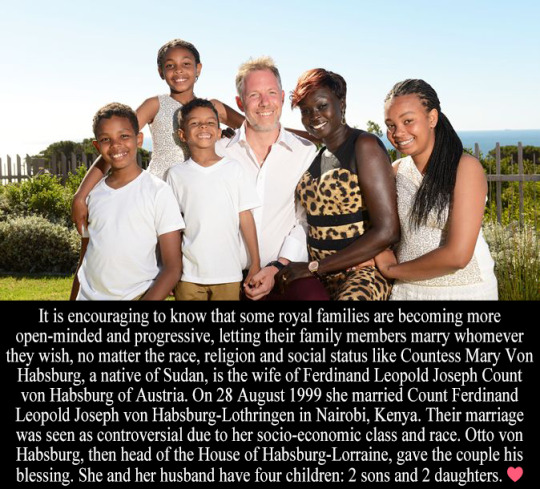
“It is encouraging to know that some royal families are becoming more open-minded and progressive, letting their family members marry whomever they wish, no matter the race, religion and social status like Countess Mary Von Habsburg, a native of Sudan, is the wife of Ferdinand Leopold Joseph Count von Habsburg of Austria. On 28 August 1999 she married Count Ferdinand Leopold Joseph von Habsburg-Lothringen in Nairobi, Kenya. Their marriage was seen as controversial due to her socio-economic class and race. Otto von Habsburg, then head of the House of Habsburg-Lorraine, gave the couple his blessing. She and her husband have four children: 2 sons and 2 daughters. ❤” - Submitted by Anonymous
33 notes
·
View notes
Text
ROUND 3, MATCH 2
Admin's commentary: II.Ulászló (Vladislav II.) was unexpectedly popular in this poll, but has he ran out of luck this time? Stay tuned y'all!
***
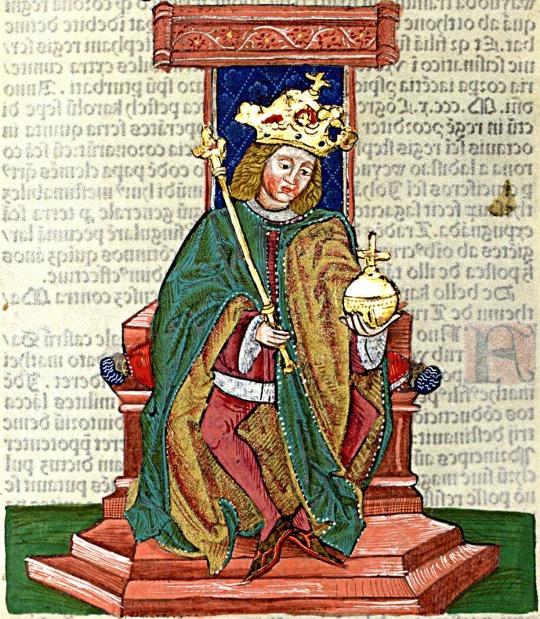
I.Károly (Karol I.) - but be honest, we all know him as Károly/Karol Róbert 1301-1342
spent the first few years on the throne fending off antikings, namely Václav III., who then gave up and passed his claim onto Otto of Bavaria, whom Károly subsequently defeated
upon his ascencion to the throne country basically ruled by the feuding nobles, also know in this period as oligarchs, he managed to consolidate his reign and regain most of the royal power trough a combination of warfare (Rozgony/Rozhanovce 1312 HELLOOO) and appeasing them with court functions
I don't even know where to START with this guy's reforms - seriously, he minted the first gold coins in Hungary, instated the banderial system (levy of the royal army from the soldiers drafted by the cities, comitates and nobles, look it was a big deal, just trust me), reformed the administation of the country and so, so much more I can't get into; basically, this man was Maria Theresa before Maria Theresa
he mostly avoided wars because of the bad shape of Hungarian treasury, though he did lead a couple of them (conflicts with Venice and Wallachia)
initiator of the 1335 meeting in Visegrád with John of Luxembourg and Casimir III. of Poland; basically, we have him to thank for the name Visegrád Four
(admin is from Košice, so he has just inherently won in her eyes because of Rozhanovce)
@tunderilona said about him: #károly róbert sweep he literally reformed the entire country
@cdqueer said about him: #hes got that anjou rizz (perfected by i. lajos <3)
@tonhalszendvics said about him: #of course károly robi had to fight off everyone in his first years#he was crowned officially in 1308#he fucked up two times before that#i mean you need to be crowned in székesfehérvár by the archbishop of esztergom with the holy crown#third time the charm he did it
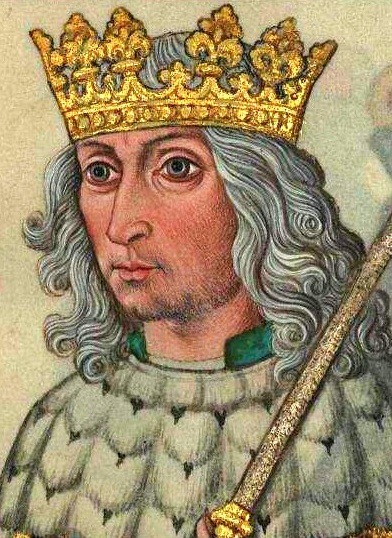
II.Ulászló (Vladislav II.) 1490-1516
I'll be honest, at this point we were at the end of the last lecture of the semester and trying to wrap shit up, our professor didn't say much about him as a person
rule of Jagiellonians in Hungary is generally remembered as a bad time, what with the continued Ottoman expansion, economic downturn and several uprisings
this dude in particular is remembered as "king Dobrze" (dobrze - "good" or "well" in Polish) for his habit of just agreeing to everything
at least he had the decency to pave the way to much more competent people by signing a treaty of succession with the Habsburgs, at the same time, he married Ferdinand I. to his daughter Anna, honestly the best decision this man has ever made
there's also some hillarious stuff with him marrying the widow of Matthias Corvinus and becoming a bigamist, but we didn't talk about that on our lectures
basically just a massive L of ruler, if this bracket was about the worst king of Hungary, he and II.András would square off in the finals
5 notes
·
View notes
Text
Thread about Joanna of Castile: Part 6.1: The Princes’ Journey : Juana of Castile and Philip of Burgundy Visit the French Court, 1501
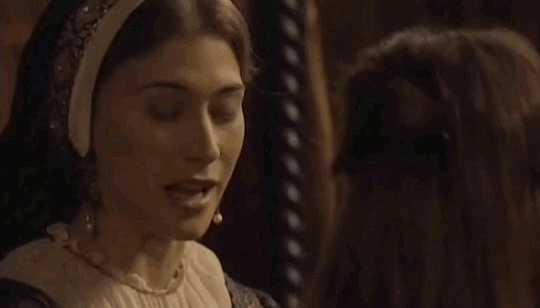
She finally made her way to Queen Anne who was sitting on her throne in front of the fireplace with the princess of Orange. Anne and Juana curtseyed and kissed and made some small talk. Shortly thereafter, the small talk faded. Juana then extended her salutations to the women on either side of the throne, including those from Angoulême, Alençon, and Dunois, as well as the niece of King Louis, Germaine de Foix. Four years after this visit, Germaine would marry Juana's widowed father, King Ferdinand.
The rest of the Queen's ladies were standing along the wall, but the Duchess of Bourbon grabbed Juana by the arm and told her it would take forever to greet and kiss all these ladies. She took Juana to her apartment. When she entered her antechamber she was met by Louis and Anne's daughter, Claude, who was two years old, in the arms of her governess' daughter. Madame de Tournon, the governess, stood behind a group of noblewomen and a group of little girls who were on their best behaviour. Claude took one look at Juana and burst into tears. She was taken away screaming at the top of her lungs.
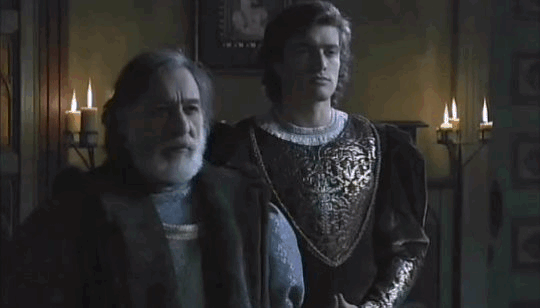
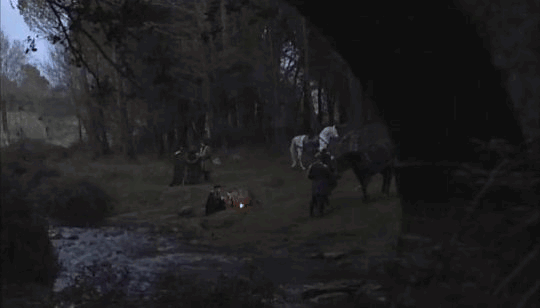
That evening Philip was wined and dined in considerable style. The king was observing the vigil of the Immaculate Conception so he fasted on bread and water and retired early. Juana was waited on by a deputation at seven o’clock with light refreshments. The king’s officer was followed by six pages dressed in the king’s red and yellow livery, each holding a candlestick in their hand. The Duchess of Bourbon followed carrying the preserves and Madame d’Angoulême carried the napkins. Madame de Nevers carried in the knives and forks followed by Charlotte d’Albret and Germaine de Foix, each carrying a dish of sugared almonds. The queen’s apothecary came in last in case Juana had any indigestion from the meal. Only ladies were allowed in the room and they left what they brought on a dresser and the beds.
Juana sat on a cushion on the floor with the Duchess of Bourbon who tried to put her at ease. The duchess rose at the end of the evening and diplomatically declared to Madame de Vendôme she was keeping Juana up and she needed her rest. She left Juana with Madame de Vendôme to show her the rest of her apartments and encouraged Juana to let her know if there was anything else she needed. To ensure there was to be nothing else needed, a procession of servants were furnishing Juana’s inner chamber with the best towels, bed-warmers, sponges, mirrors, nightcaps and pins. Even the basin of her close-stool was made of silver with gold plate around the rim.
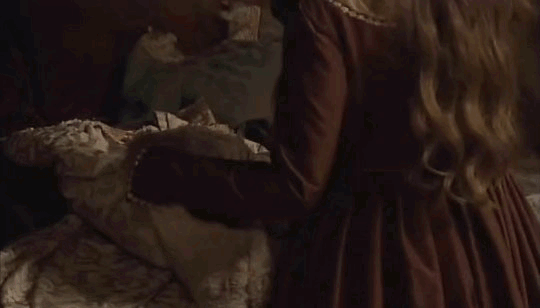
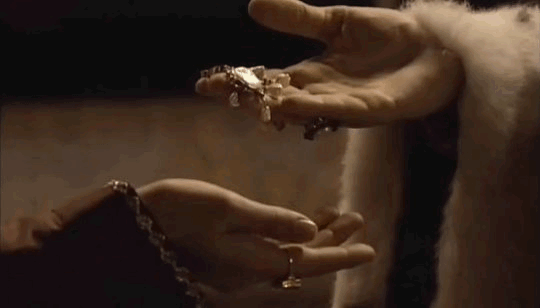
The next day, Queen Anne sent a purse of money for Juana to present in Anne’s name at mass. Juana refused to perform this act of vassalage and insisted she would only give money in her own name.
Anne waited for Juana to follow her out of the chapel but Juana lingered long enough to demonstrate she left on her own accord. Queen Anne was fuming and that evening Juana made her excuses saying she was ill to avoid the festivities. Several ladies of the French court carried spices to Juana.
Philip offered money in Louis’ name at mass that same day.
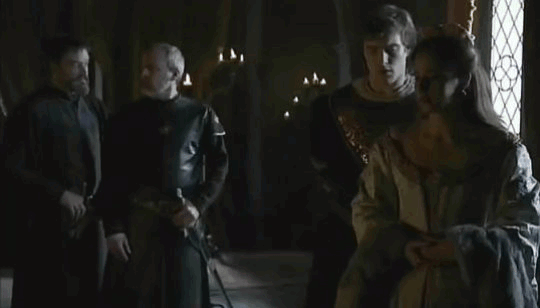
A few days later Juana appeared at dinner in Spanish style dress covered in jewels and cloth of gold. After supper she danced in the Spanish manner, impressing all with her elegance.
The entire visit was filled with banquets, dancing and many private suppers along with worship and thanksgiving. Unfortunately the dreadful weather made hunting impossible. The archducal couple would leave Blois on December 15 with King Louis accompanying them as far as Amboise. Madame d’Angoulême would entertain Juana and Philip for six days at her home in Cognac.

Louis was so pleased with the visit he dreamed of a peace treaty with Spain and Queen Anne’s hopes for the Habsburg marriage for her daughter were greatly increased.
Unfortunately, neither of these things happened. In April 1505, King Louis was gravely ill and the doctor’s feared for his life. He was forced to make a definitive decision regarding the marriage of his daughter Claude. In May 1506 he proclaimed in his will that six-year-old Claude would marry the eleven-year-old heir to the throne, Francois d’Angouleme. Claude eventually married Francois, who became King Francois I upon the death of Louis XII on January 1, 1515.
Sources : Further reading: “The Valois: Kings of France 1328-1589” by Robert Knecht,
“Juana the Mad: Sovereignty & Dynasty in Renaissance Europe” by Bethany Aram
#joanna of castile#juana i of castile#philip the handsome#juana la loca#spanish monarchy#isabel#johanna van castilie#european history#history#irene escolar
9 notes
·
View notes
Text
The Habsburgs were the way they were because they spent a solid two centuries where it was more common to marry a first cousin than to marry someone more distantly related to you, so that for two centuries they never got anyone who WASN'T a close relation. And like, cousin marriages were the least of it.
For example: Philip IV of Spain had a sister named Maria Anna of Spain, who married their first cousin Ferdinand III. Philip IV then married their daughter Manana of Austria, who was both his niece and his first cousin (once removed). This was the third uncle-niece marriage in the Habsburg family wreath in two centuries. And the second time the niece in question was both the uncle's niece and his first cousin once removed (her parents had been first cousins).
Charles II was where the inbreeding started to show, and in his paternal line it had been two centuries in which the furthest relationship was second cousin. And in his maternal line, pretty much the same thing. In those two centuries, only four people in the family married people who weren't descended from Philip and Joana of Castille, and those four were fairly early on.
In order for cousin marriage to be a problem, you have to spend a couple of centuries where nobody in your family marries anyone who isn't a cousin.
Okay, so this is the post where I defend first cousin marriage, which is featured in Mansfield Park, Sense & Sensibility, and also comes up in Pride & Prejudice (I mean Anne de Bourgh and Mr. Darcy, Mr. Collins is a distant cousin to Elizabeth, at least 2 degrees removed, Mr. Elliot in Persuasion is another second cousin, though his line about Anne not changing her name might be the most cringy pickup line in romance history).
Firstly, 1st cousin marriage, in general is a squick NOT genetically dangerous. Yes, the Hapsburgs did happen, but they were intermarrying like crazy and within a very small dating pool. For most people, the genetic danger is equal to a woman over 35 having a baby. Negligible.
You also have to consider why cousin marriage was a good idea. Yes, you want to maintain wealth within a family, but more than that, women are vulnerable in marriage. When divorce laws are strict, and even running away from abuse is heavily frowned upon (just see The Tenant of Wildfell Hall) it becomes very important to choose prudently. Now who should you trust not to be abusive? The man you met at six balls in heavily chaperoned settings or cousin Charles, who you've known since birth and who has always been kind to you? I'm going with Charles. And you have more allies (hopefully) in that situation. You can go to your uncle for help if something is going wrong. You have an established network.
You can see why the overly cautious and continually neglected and verbally abused Fanny Price doesn't want to chance it on the wider world! She knows Edmund about as well as a human can know another human.
Now I'm sure this didn't always work perfectly, it certainly didn't for Eliza Brandon, but I can really see the logic behind it especially in Regency England.
In most Western countries, first cousin marriage just seems weird, but it's probably because we have such large dating pools these days and much longer dating periods (usually). People don't marry in a matter of weeks, they often date for years. With the benefits of cousin marriage fairly incomprehensible, we tend to focus on the risks.
Also, we have to remember that these people were not raised being told it was wrong, it wouldn't be gross to them. In fact, in Mansfield Park the idea that it would be a real fear for Fanny to marry one of the sons comes up more than once (at the ball we are told onlookers might have thought Sir Thomas was raising Fanny as a wife for his second son). In Frankenstein, Victor's parents specifically call Elizabeth his cousin instead of sister, assumably because they shipped those two crazy kids at five years old.
Anyway, many cultures still today prefer or practice first cousin marriage. The genetic risk increase is very small (it raises from about 2% to 4%) and we now have genetic testing as well. While it may be gross to you, it is not wrong or immoral, it is a difference. I can see why women might consider it a safer and desirable option.
I'm bringing this up not just because I read way too many posts about how gross the ending of Mansfield Park is to people, but because many people alive today are married to their first cousins and if you meet one, please be civil.
504 notes
·
View notes
Photo
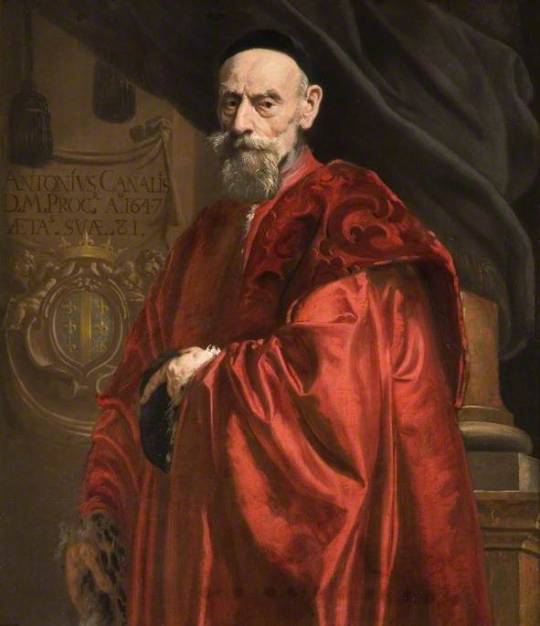
Daniel van den Dyck (Attr.) - Portrait of Antonio Canal - 1647
oil on canvas, height: 113 cm (44.4 in) Edit this at Wikidata; width: 98.4 cm (38.7 in)
Birmingham Museums Trust, UK
Daniel van den Dyck, known in Italy as Daniel Vandich (baptized on 3 December 1614, Antwerp – 1663, Mantua) was a Flemish painter, printmaker, architect and engineer. After training in Antwerp he left for Italy where he first worked in Venice and later became a court painter in Mantua. He was a versatile artist who created mythological and religious scenes, as well as portraits and flower-pieces.
Very little is known about the early life of Daniel van den Dyck. He was born in Antwerp as the son of Jan van den Dyck and Cornelia Kerstboom. He was baptized in Antwerp Cathedral on 3 December 1614. He was registered as a pupil of Peter Verhaeght in the Antwerp Guild of Saint Luke in the guild year 1631-1632. He was registered as a master of the Antwerp Guild of Saint Luke in the guild year 1633-1634. It is assumed that shortly after becoming a master he left Antwerp as he was not involved in any of the large commissions on which Antwerp painters worked in the middle of the 1630s such as the decorations for the Joyous Entry into Antwerp of the new governor of the Habsburg Netherlands Cardinal-Infante Ferdinand and the decorations for the hunting pavilion Torre de la Parada of the Spanish king Philip IV near Madrid.
The artist passed first through Bergamo where he created a few signed and dated portraits. He was in Venice likely from 1634 onwards. Here he married Lucrezia Renieri, the eldest daughter of Nicolas Régnier, a Flemish painter active in Venice who was herself a painter. The couple had three sons. His father-in-law had been active in Venice since 1626 not only as a painter but also as an art dealer and art collector. Clorinda, the younger sister of van den Dyck's wife was married to the prominent Italian painter Pietro della Vecchia (1605-1678). These family ties meant that van den Dyck could rely on a network of Flemish and Italian artists in Venice. This allowed him to gain many commissions for religious paintings in churches as well as for portraits. He painted wall decorations in the Palazzo Pesaro in Preganziol together with his brother-in-law della Vecchia and their respective spouses.
Evidence of the esteem in which he was held in his time is the fact that one of his works - a portrait - was included in the early biographer Carlo Ridolfi's book on Venetian painters of 1648 entitled Le maraviglie dell'Arte ovvero, Le vite degli Illustri Pittori Veneti and dello Stato. He was also praised by Marco Boschini in his La carta del navegar pitoresco of 1660, a panygeric poem about Venetian painting. Boschini dedicated two pages to van den Dyck and represented the artist in a print as Jupiter embellishing Virtue with a royal mantle.
Giovan Francesco Loredano, one of the founders of the Accademia degli Incogniti, a learned society of freethinking intellectuals established in 1630 in Venice, often ordered the illustrations for his multiple writings from van den Dyck, Pietro della Vecchia and Francesco Ruschi.[3] One of these prints was a portrait of Loredano which he made for Loredano's Opere (Collected works).
From late 1657 van den Dyck was living with his family in Mantua. On 2 April of the next year he was named by duke Carlo II Gonzaga as his official court painter, architect, surveyor of his building program and engineer for stage designs for the theatre. He also was made the superintendent of the duke's gallery and tasked with reconstituting the ducal art collection which had become dispersed during the previous two dukes' reign. Possibly his appointment was made on the recommendation of his father-in-law who had provided services to the duke on various occasions. As the prefetto delle fabbriche (surveyor of works) van den Dyck had to move between the various construction sites such as Maderno, Marmirolo, Mantua and Venice, to check the transportation of the many marble statues, inspect the progress and quality of the various construction works undertaken at the ducal palace as well as the suburban residences, ordered supplies and tools, organized the daily assignments of the workers and made sure the duke was informed timely through frequent correspondence. The constant and exhausting travel in this role did not allow van den Dyck to work as a painter, the premier reason for his appointment to the court. This may explain why van den Dyck operated a large workshop with assistants. These assistants would produce his works which he would then 'touch up'.
The date of his death is not known with certainty. It is placed shortly after he drew up his will on 27 June 1662. On 4 April 1663 the duke of Mantua appointed another Flemish painter called Frans Geffels as his new court painter. Van den Dyck's son may have become a painter as his grandfather Nicolas Régnier bequeathed onto him all his prints, drawings and reliefs to study.
22 notes
·
View notes
Text
Anti-propaganda to Wilhelmine von Biron: Captivating the attention of a notorious skirt-chaser like Metternich is not much of a feat, is it? Metternich was distracted by women at every stage of his career, critical or not. Imho, this says a lot more about Metternich than about Wilhelmine.
Now, let's compare that to Eugène's task: He had to captivate the heart of a lady who at the age of 16 - while being unable to correctly spell the name of her suitor - was already dead set against this - and I quote: - "shameful" marriage. And so was her stepmother. And her father, and her brother, and the rest of the family.
For context: During the French Consulate and the early Empire, being a napoleonic sexyman was basically Eugène's main job. It was absolutely clear that Napoleon would use him for some political marriage. There were some negotiations with the Duchess of Gordon about her daughter Georgiana, and some with the royal family of Naples-Sicily. But in the end, it came down to this lady:
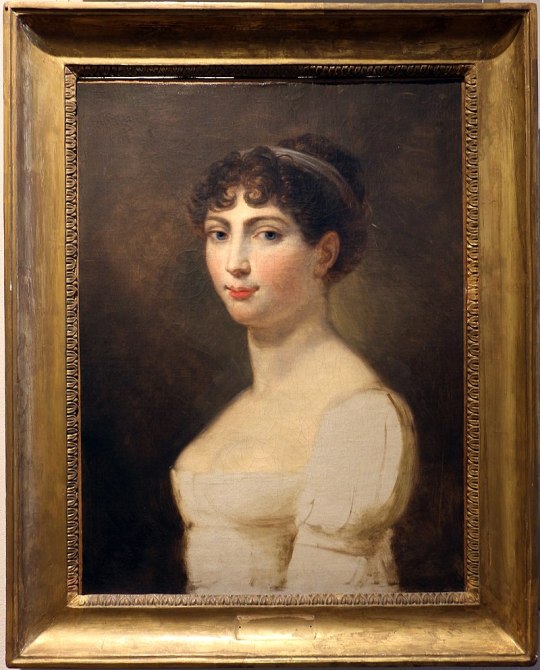
(Auguste-Amalie von Bayern)
Once Napoleon had declared himself emperor, he needed to push his way into the exclusive circles of old European princely families. His first target was the Wittelsbach family, ruling in Bavaria. Not the most powerful but one of the oldest ruling families, surely older than the Habsburgs or those fledgling Hohenzollern. So Naps officially asked for the hand of the oldest daughter Auguste for Josephine's son Eugène de Beauharnais.
Thus starting a flurry of desperate activities in the Wittelsbach Munich residence. How do you save your beloved daughter from the clutches of such a French Revolution creature without risking the wrath of a French emperor whose help against an Austrian invasion you want to have?
If somebody's interested in the (highly amusing) details of that long-winded diplomatic struggle, I've written a whole series of posts here. In short: It involved the Wittelsbach family hastily engaging Auguste to her cousin Karl von Baden, Napoleon then sending diplomats to the Baden family, threatening all hell would break loose if they dared to publicly accept the engagement, putting pressure on Auguste's father elector Max Joseph, trying to win over Bavarian diplomats, and, while Napoleon was fighting at Austerlitz, sending the incomparable Josephine in person to Munich, armed with all her charms and a stack load of gifts and bribes.
In vain.
And even when Napoleon himself had gone to Munich, even after he had finally put enough pressure on the Bavarian elector to wrestle a "yes" out of him, even after Auguste had heroically decided to sacrifice herself for her fatherland (again, her words), even after Eugène had been told of his own engagement (by the postman) and had first seen a portrait of his fiancée (on a coffee mug) - even then French diplomats were sure Max Joseph would find a way to wriggle out of this and the marriage would fall through if Napoleon did not personally push the couple in front of the altar and keep them in place there.
So Napoleon called Eugène to Munich.
And guess what? According to French observers, bride and bridegroom were left alone in a room for like ten minutes. After which time they emerged, holding hands and very ready to sacrifice themselves for their respective fatherlands. While Bavarian observers are a little less enthusiastic about the first meeting, even they admit that Auguste suddenly seemed a lot more cheerful and was obviously pleasantly surprised.
Auguste, after having spent the last two weeks wailing after her former fiancé and big love Karl von Baden, on seeing the horrible Frenchman she was to marry: "Hold a second, guys - are you telling me they also come like this?"
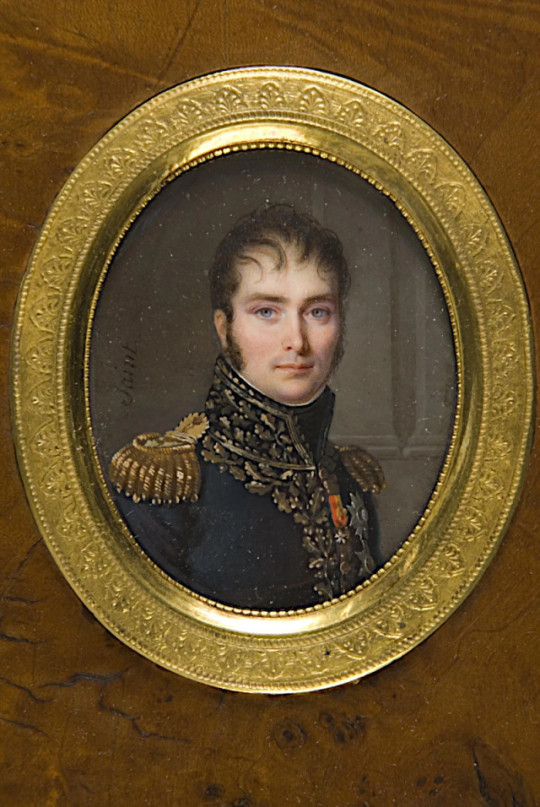
Within Napoleon's family, these two may have had the happiest marriage of them all. They stuck together even after Josephine was kicked out by Napoleon, even when Eugène lost the inheritance he was supposed to have, and after Eugène's death at the age of only 42, Auguste desperately struggled to keep his family and his memory alive.
Mostly in vain, it has to be said, as Eugène today is forgotten to a large degree.
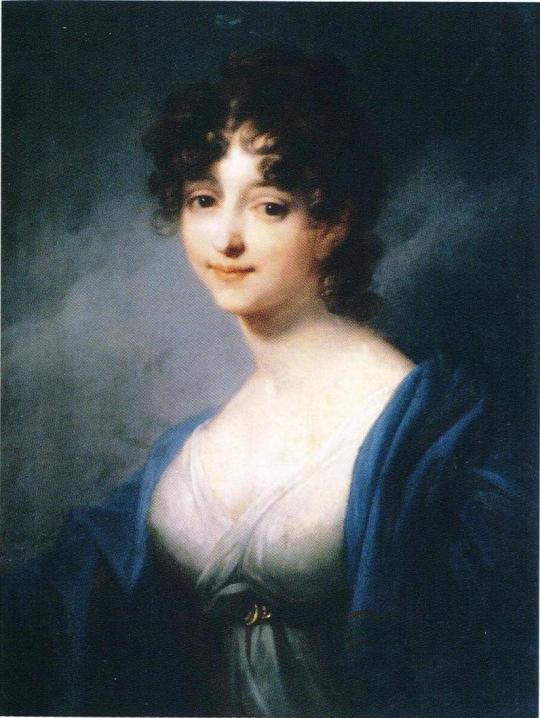

Wilhelmine von Biron
"Beautiful, scandalous, three-times divorcee! Not only exchanged over 600 letters with Sexy Slut Metternich, but also captivated him to such degree that her renewal of an old affair with Alfred Windischgraetz distracted Metternich at a critical stage in the negotiations. Distracted! Metternich! At a critical stage!”
Eugène de Beauharnais
[no propaganda submitted]
95 notes
·
View notes
Text

Emperor Francis I
Artist: Austrian School
Title: Emperor Francis I 1708-65 Holy Roman Emperor, Wearing The Official Robes Of The Order Of St. Stephan
Francis I, Holy Roman Emperor
Francis I (Francis Stephen; French: François Étienne; German: Franz Stefan; Italian: Francesco Stefano; 8 December 1708 – 18 August 1765) was Holy Roman Emperor, Archduke of Austria, Duke of Lorraine and Bar, and Grand Duke of Tuscany. He became the ruler of the Holy Roman Empire of the German Nation, Austria, and Tuscany through his marriage to Maria Theresa, daughter of Emperor Charles VI. Francis was the last non-Habsburg monarch of the Empire. The couple were the founders of the Habsburg-Lorraine dynasty, and their marriage produced sixteen children.
#portrait#male#indoors#emperor francis i#austrian school#european art#holy roman emperor#robes#order of st. stephan#emperor#full length#royal crown#classic pillar#table#chair#standing#historical#holy roman empire#german nation#austria#tuscany#habsburg-lorraine dynasty
5 notes
·
View notes
Photo


Luise Heyer as Maria Leopoldina of Austria, the Empress Consort of Brazil, Queen Consort of Portugal and Archduchess of Austria
Dona Maria Leopoldina of Austria (22 January 1797 – 11 December 1826) was born Caroline Josepha Leopoldine Franziska Ferdinanda of Habsburg-Lorraine in Vienna, Austria, Holy Roman Empire. She was the daughter of Holy Roman Emperor Franz II and Empress Maria Theresa of Naples and Sicily. In 1817 the Archduchess married Prince Dom Pedro of Braganza (12 October 1798 – 24 September 1834), heir to Portugal, later the Emperor Dom Pedro I of Brazil and King Dom Pedro IV of Portugal. The couple had 7 children: Queen Maria II of Portugal, Miguel, Prince of Beira, João Carlos, Prince of Beira, Princess Januária of Brazil, Princess Paula of Brazil, Princess Francisca of Brazil and Emperor Dom Pedro II of Brazil. On September 2, 1822 while she was the Acting Princess Regent of the Kingdom of Brazil in the absence of her husband Maria Leopoldina signed the Decree of Independence, declaring Brazil separate from Portugal. She died at age 29 in 1826 after a miscarriage. As Acting Regent Maria Leopoldina was the first woman to govern an independent Brazil, the first empress consort of the country, the first empress of the Americas and the first woman to govern an independent American country.
Victoria Guerra as Amélia of Leuchtenberg, the Empress Consort of Brazil and Duchess of Braganza
Dona Amélia of Leuchtenberg (31 July 1812 – 26 January 1873) was born Amélie Auguste Eugénie Napoléonne de Leuchtenberg in Milan, Kingdom of Italy. She was the daughter of Eugène de Beauharnais, Duke of Leuchtenberg and Princess Augusta of Bavaria, Duchess of Leuchtenberg. She was the second wife of Emperor Dom Pedro I of Brazil after their marriage in 1829 and they had one child, the Princess Maria Amélia of Brazil. After Dom Pedro I abdicated the Brazilian crown, Amélia accompanied her husband back to Europe. They held the titles of Duke and Duchess of Braganza until Pedro’s dead in 1834. Amélia died in Lisbon at the age of 60 in 1873.
A VIAGEM DE PEDRO | PEDRO, BETWEEN THE DEVIL AND THE DEEP BLUE SEA (2021). Dir. Laís Bodanzky
#a viagem de pedro#perioddramaedit#filmedit#movieedit#weloveperioddrama#worldcinemaedit#perioddramasource#onlyperioddramas#historicwomendaily#periodedits#braziliansource#cinematv#cinemapix#fyeahmovies#motionpicturesource#filmtv#filmtvdaily#userperioddrama#femaledaily#femalecharacters#flawlessbeautyqueens#historyedit#women in history#period drama#pedro between the devil and the deep blue sea#brazilian cinema#brazilian movies#mine#mine: edit#brazilian stuff
74 notes
·
View notes
Note
hello there! i just wanted to ask, why you accepted that one anons request of adding ceyx in as a ro? the fact hes your step brother is...very concerning, but im willing to hear your reasoning.
I've gotten a lot of hate for this decision before so I'm going to try to explain myself as best I can here. This post is going to be long even without revealing in-game spoilers, so bear with me.
I first want to clarify that it was actually several people that requested Cexy be a love interest; y'all just didn't see every post at the time. He's a very popular character - in fact I think he's the most popular of all the romance options at this point - and a major part of the plot revolves around him, so it makes sense to have him be an RO for people who want major angst. His route is filled with angst.
I've also clarified before that Ceyx and the MC share no familial DNA whatsoever. The only thing that makes them "relatives" is a political marriage between Ceyx's mother and MC's father, who (SPOILER!) actually can't stand each other. In fact, historically speaking, several famous couples have had much closer familial ties to each other, from Queen Victoria marrying her first cousin Prince Albert to King Tut who was wed to his half-sister Ankhesenamun. Even Henry VIII of England encouraged a match between his eldest daughter Mary and his illegitimate son Henry FitzRoy, though this never happened. And don't get me started on the Spanish Habsburg dynasty.
At the time this game takes place, the Emperor of Rome is Nero, who's mother Agrippina the Younger had married her uncle, the previous Emperor Claudius. Such matches would not have been unusual back then and while there would have been gossip, nobody would have been scandalized. This is a historic fantasy, after all, so I have a lot of wiggle room even while keeping everything as true to history as I can.
I'm also going to reiterate that there will be an option at the start of the game to disable the romance with Ceyx and keep things platonic so nobody will be triggered.
43 notes
·
View notes
Text

Doña Juana La Loca [Doña Joanna the Mad].
Francisco Pradilla Ortiz, 1877.
This painting show Spanish queen, Juana I of Castile (1479-1555), holding vigil at the coffin of her husband, Philip “the Handsome”, on the long journey from Burgos in Castile where he had died, to Granada in southern Spain. Stricken with grief, she had refused to let the body be buried and made the funeral cortège travel only at night. Here she is a haunted presence staring at the coffin, her future in tatters. I know how she feels.
Juana was the daughter of the Catholic monarchs, Ferdinand II of Aragon and Isabella I of Castile, and the elder sister of Catherine of Aragon, Henry VIII’s first wife. Ferdinand and Isabella’s marriage in 1469 and the conquest of Granada in 1492 brought about the formation of Spain as it is known today. The royal couple were renowned for their extreme Catholicism, establishing the Spanish Inquisition in 1478 ostensibly to combat heresy, but in practice it served to consolidate the power of the monarchy in the newly unified Spanish kingdom. The Inquisition operated via infamously brutal methods, with royal consent. Queen Isabella declared she would rather have her country be depopulated than become ravaged by heresy.
Indeed, stories circulated over Juana’s own religious skepticism which was interpreted as an early sign of insanity (“How dare she question our sacred Catholic faith? She must be insane”). There are contemporary written sources which claim she herself was subjected to brutal torture, a method called “La cuerda,” whereby, if true, she would have been suspended from a rope with weights attached to her feet. The question of how “mad” Juana was, and how far reports of her “uncontrollable” behaviour were down to political muck-spreading devised to destroy her reputation, is one which still fascinates and divides historians today.
Juana was a bright student, received an excellent education for her time and was fluent in several languages. She was married off when she was 16 years old for political purposes. Philip was Duke of Burgundy and a member of the powerful house of Habsburg (his father, Maximilian I, would become Holy Roman Emperor in 1508). She went on to have six children with him, including the future Holy Roman Emperor, Charles V. Apparently, Juana started exhibiting signs of mental instability in 1504, when her mother was stricken with a fever and later died. She had already been bereaved of several members of her family, including a brother and an elder sister. Her maternal grandmother, Isabella of Portugal, supposedly suffered from mental illness and was sent to a convent, and it has been suggested by historians that Juana may have inherited a similar condition, such as schizophrenia or depression. However, her so-called “mad” behaviour could also be explained as an understandable response to the many bereavements she endured, and from a modern perspective, as a result in living in such a toxic, religiously-febrile environment..
The most severe stress she suffered was arguably her husband’s blatant infidelity. In an era where women were expected to turn a blind eye to their husband’s philandering ways, Joanna instead flew into jealous rages, which shocked both her husband and the court, and for which she would be punished. Moreover, Juana was caught up in a power struggle between her father and her husband when she was made Queen of Castile after her mother’s death. Both Ferdinand and Philip, (and later, her son Charles) had a lot to gain politically from Juana being declared unfit to rule. Eventually, she was sent, perhaps banished, to a convent by her son and not allowed any visitors for the rest of her life.
The subject of Juana of Castile obsessed the artist Pradilla throughout his life. He was 29 when he painted this, his definitive masterpiece, and it brought him immediate international recognition.
SOURCES???
5 notes
·
View notes
Note
Is it unusual that Princess Maria Anunciata of Liechtenstein wore a Luxembourg tiara to her wedding? Are there examples of other families loaning out tiaras to people that are more distantly related? It looks beautiful on her it just struck me as not what we normally see
I know it sounds weird but I was actually more surprised that she wore a Liechtenstein tiara for her wedding. For some background, Princess Maria Anunciata is the daughter of Prince Nikolaus of Liechtenstein and Princess Margaretha of Luxembourg and if you think about she is a granddaughter of the sovereign on both sides so even though she is ‘of Liechtenstein’ she’s the same generation out from the throne on her mother’s side. The reason I was surprised is because despite being ridiculously wealthy the Liechtenstein princely family only have a few tiaras and the Luxembourg grand ducal family have a bunch. They have so many tiaras that they have four different bridal tiara traditions in the family with the Diamond Floral Tiara, Adelaide Sapphire Tiara, Congo Diamond Tiara, and Vine Leaves Tiara all being worn by multiple brides. If anything I was expecting her to wear the Kinsky Honeysuckle Tiara because the Habsburg Fringe hasn’t been used as a wedding tiara in 50 years.

Different families loan out tiaras in different ways. Luxembourg is pretty generous with their tiara loaning and Grand Duke Henri has loaned out a tiara to each of his nieces or nieces-in-law for their wedding day with the exception of one person (I will let people who have been in the royal fandom for a long time guess who) so it wasn’t unusual at all for him to loan a tiara to Maria Anunciata. I really loved that she wore a tiara from each side of her family on her wedding day and the way she did it. She wore the very classic Habsburg Fringe Tiara in a very classic way for the actual wedding and then for the reception she had a little more fun by wearing the Vine Leaves Tiara placed like a headband and tilted to the side. I’m normally not a fan of headband tiara placement because is usually means that we can’t see the design of the tiara but this worked perfectly.

And we’ve got her sister, Princess Marie Astrid of Liechtenstein's, wedding tomorrow in Rome! After the amazing showing by Maria Anunciata I’m even more excited to see what tiara(s) Marie Astrid will wear. Their mother, Princess Margaretha, and aunt, Archduchess Marie Astrid, also got married only a couple weeks apart back in 1982 and they wore the same tiara so I’m interested to see if they will follow that pattern too.
#Tiara Talk#Princess Maria Anunciata#Liechtenstein#Luxembourg#tiara#liechtenstein princely family#luxembourg grand ducal family#bridal tiara#northlandbaby
80 notes
·
View notes
Photo








𝕋𝕎𝕆 𝕊𝕀𝕊𝕋𝔼ℝ𝕊, 𝕊𝔸𝕄𝔼 𝔻𝔼𝕊𝕋𝕀ℕ𝕐
“So the younger daughter Jadwiga, aged nine, was crowned queen in Krakow in 1384 (...) The young queen Jadwiga was then urged to break her engagement to William of Habsburg and to marry instead Jagiello, the ruler of neighboring Lithuania. He was elected king of Poland in absentia, on the condition that he take up residence in Poland. Four years after Jadwiga's coronation, Wladyslaw-Jagiello was crowned king in Krakow, and the couple governed the country together until Jadwiga's early death in 1399 or 1400. Since no children had survived, the king's legitimacy was contestable, but he remained on the throne after marrying Anne of Cilly, one of the closest relatives of the former reigning house. A very similar case was that of Jadwiga's elder sister Maria of Hungary. Six days after the death of her father Louis the Great, the twelve-year-old girl was crowned at Szekesfehervar by the archbishop of Esztergom as if she were a king, not by the bishop of Veszprem as if a queen-consort. The queen-mother, Elisabeth of Bosnia, was her guardian.(...) Three years later Maria was married at fifteen to Sigismund of Luxembourg-Bohemia, who received only the title "regni Hungarie tutor," not "rex," nor was he crowned in 1385. Maria ceded to Sigismund the i.w regni el diadema, though this did not mean that she totally resigned the queenship. Since documents were issued in both their names, she was still regarded as the reigning queen while Sigismund was co-regent and commander-in-chief of the army The marriage was without issue, and after Maria's death in 1392 (or 1395) Sigismund's title to the throne was contested by 32 nobles. Sigismund condemned them to death; they were publicly beheaded in Ofen. He then legitimized his kingship by marrying Barbara of Cilly, one of the nearest relatives of the old Hungarian kings. The parallels between the queenships of Maria of Hungary and her sister Jadwiga of Poland are obvious. In both cases the queens died without surviving issue, and their husbands remained in power by marrying other cognates, i.e., relatives through female lines, of the old dynasty”. - Armin Wolf, "Reigning Queens in Medieval Europe: When, Where, and Why". In Parsons, John Carmi (ed.). Medieval Queenship.
Happy Birthday Leila! @0girlhasnoname0
#historyedit#mary of anjou#jadwiga of anjou#perioddramaedit#weloveperioddrama#korona krolow#korona królów#the crown of kings#hedwig of anjou#mary of hungary#polish history#hungarian history#history#*mine
222 notes
·
View notes
Text
Marie Louise on the road (12)
We left the imperial tourists in Middelburg after a delightful (if a bit wet, thanks to Eugène and Bessières) afternoon at the ocean. Marie Louise continues:
Friday 11th May
On the 11th, the weather was dreadful all day. That did not prevent the Emperor from going a second time to see Flushing. I remained in bed with a good fever.
Now look at what you’ve done, Eugène and Bessie!
I don't know what happened to my iron health, it's all gone.
Beg your pardon, Madame, you’ve been talking about nothing but your precious health failing ever since you left Vienna in March!
I'm sure I owe it to the doctors who did nothing but drug me during the whole trip. [...]
Bessières and Eugène: Absolutely. We’re sure it was them!
Doctors: It was either drugging her or listening to her wailing...
Samedi 12 mai
On the morning of the 12th the Emperor held council. It is really not our fault that we heard everything, because the salon was near my room and the Emperor was of an awful intensity.
And the fact we pressed our ears to the door had nothing to do with it at all!
According to Catherine of Württemberg, Napoleon at this meeting once more dreamt of an expedition to England. His bad mood and subsequent shouting may also be explained by bad news from Holland: smuggling still going on and secret peace negotiations behind his back through Fouché and Ouvrard.
I was still feverish all night, and as I was very tired and the weather was terrible, I did not leave until two o'clock to take a carriage ride around the town [Middelbourg]. [...] On my way home I found the Queen of Westphalia in a very bad mood because I had not taken her with me, but she annoys me. She keeps asking me "Do you still love the Duchess of Montebello?" I have known her for two months and I have become quite attached to her. I couldn't help answering the Queen: "Sister, I don't change my friends like my underwear". What she told me there was a Queen's words. It is said that we don't know how to be really attached, but I am willing to show that there are exceptions in our ranks.
Apparently, this unexpectedly close friendship of a Habsburg princess and the cold and reserved daughter of some obscure gentry family did already raise some eyebrows this early on. But of course Catherine had her own reasons why she could not understand how Marie Louise would be this close to any of her ladies:
It is also true that the poor Queen is very unhappy with her friends. No sooner does she have one than the King makes her his mistress, and that is hardly the way to stay attached to them.
Which also explaines Catherine’s attitude towards the countess Liverstein two days earlier, as the countess apparently had just replaced another of Jérôme’s mistresses who had been sent home to Cassel. Apparently Jérôme mistook the household of his wife for his personal harem.
In the evening, the Viceroy led the Duchess of Montebello to engage in some contraband [...]
Eugène?!
Napoleon: Tu quoque, fili?
[...] and see the bell tower of the cathedral church which is said to be very old.
I love the combination. Apparently, buying smuggled goods was something you could easily do while on a sightseeing tour through town. And I assume the duchess was sure that the viceroy of Italy at least would not visit any »maisons closes«. He could invite the ladies to his place.
It was decided that we would leave the next day regardless of the weather. I am very happy because although the island is certainly very attractive, I did not feel very comfortable to be obliged to stay four days in the same clothes.
In the evening we received the authorities, who are not very numerous and most of whom do not know French.
And this is where Marie Louise ended her diary, despite the fact that the journey continued for two more weeks. Maybe she did not have the time to resume it, or it was left behind in one of the many accidents that seem to have been a natural part of Napoleon’s travels. The imperial couple went via the chateau de Laeken on to Bruxelles next, and in the following two weeks (among other towns) to Ostende, Lille, Calais, Boulogne, Dieppe, Le Havre, Rouen and finally returned to Saint-Cloud on June 1st.
Despite her many complaints, she seems to have won a mostly positive first impression of the country, according to Savary. And she had probably also learned what to expect of her impetous husband, and that it would be a good idea to always have some fresh undergarments with her when travelling in his company.
An abridged and edited version of Marie Louise’s diaries was first published by Frédéric Masson. An English translation can be found here: The private diaries of empress Marie Louise. The first complete edition, with many additional footnotes, was published by Charles-Éloi Vial and is, as far as I know, only available in French: L’adieu à l’empereur.
These volumes actually contain some more travel journals, from 1813 (to Cherbourg) and from Rambouillet to Vienna after the fall of the empire in spring 1814. But while probably more interesting for the historian, they’re far less entertaining. Despite the duchess’s valiant efforts Marie Louise by that time seems to have picked up enough Parisian court etiquette to not write down things all too inappropriate.
#napoleon#napoleon's court#marie louise#jerome bonaparte#catherine of württemberg#imperial honeymoon#honeymoon trip with bonus entertainment#secondary empress on tour
23 notes
·
View notes
Photo

Archduchess Mechthildis of Austria, Princess Czartoryska (1891-1966).
She was a daughter of Archduke Carl Stephen of Austria Teschen and a first cousin of King Alfonso XIII of Spain. She was a member of the Teschen branch of the House of Habsburg Lorraine and an Archduchess of Austria and Princess of Hungary, and Bohemia by birth. In 1913 she married Prince Olgierd Czartoryski. The couple had four children and lived in Poland until the outbreak of World War II when they emigrated to Brazil.
#Archduchess Mechthildis of Austria#Carl Pietzner#erzherzogin#austria teschen#house of habsburg lorraine#princess czartoryska#polish aristocracy#kingdom of poland
12 notes
·
View notes